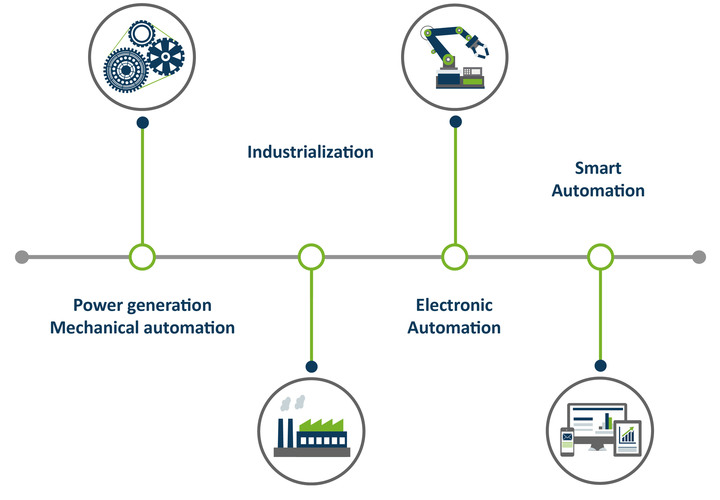 |
Industry 4.0 concept has its origins in a strategic project by the German government aimed at technological evolution and optimization of industrial processes. The idea was to create a comprehensive system allowing for the highest production performance, the most optimal energy use and maximum goods customization possibility — and all of that even in large-scale production. The four basic principles laying the foundation of the Smart Factory are as follows:
Cyber-Physical Systems (CPS). Permanent interoperability results from a worldwide network created by enterprises and comprising all from equipment and systems to logistics and operators — interlinked and constantly reciprocating through the Internet of Things.
Data integration into the context. This is carried out by information systems that are able to process raw data provided by the machines directly during production and integrate them in the full context. This way, more process needs can be met on time.
Permanent digital interconnection. All the way from end customer to manufacturer and vice-versa, process engineering enables product customization thanks to the system that autonomously gathers data necessary for carrying out the needed task.
 |
Decentralization of decisions. Integrated and interconnected components allow CPS to function independently and face interferences, exceptions or local needs reliably.
Thus, the integration of production, distribution and information systems of manufacturers is the key notion of the Smart Factory. This came naturally for Piovan during the evolution of its process control/management software while following the Industry 4.0 guidelines. The company has created the data exchange networks required for interconnection of various technological ecosystem areas well ahead of schedule (planned for 2020).
 |
The new software named Winfactory 4.0 employs OPC-UA protocol (standing for Open Platform Communication – Unified Architecture) chosen by Industry 4.0 for preparing Smart Factory specifications. The protocol enables Winfactory 4.0 to supervise and guarantee dialog between Piovan machines and those of OEMs. No interface for “translation” of information provided by individual devices into a common format is needed anymore, since data exchange is immediate and flexible in a sense that different systems can interact autonomously. A communication platform in the same strain allows software access and use on smartphones and tablets. Thus, in spite of the challenge complexity, Winfactory 4.0 by Piovan enables the extreme flexibility in managing processes and machines.
Simultaneously with the work on Winfactory 4.0, Piovan developed integrated functionality allowing for highly precise control of process parameters in managing factory power sources. The in-depth knowledge of power sources use for individual processes makes it possible to determine their efficiency level, which has a great influence on production costs. Information required for identification of KPI and advised best practices for power consumption optimization are rapidly gathered at various factories, distant from one another geographically. This falls under Big Data collection and analysis, only industry-specific for meeting the needs of Piovan’s customers.
 |
For different industrial processes, Winfactory 4.0 can be configured accordingly. Separate modules with fully configurable setups have been developed by Piovan to manage each particular task — from PET preforms and bottles manufacture to that of flexible film — or a specific sector, e.g. automotive or medical. Energy license focused on monitoring power use by any industrial equipment is not dedicated to plastic industry; its applications are definitely much broader. According to specific sector/application, Energy license is ready to be integrated in a particular Winfactory 4.0 configuration.
Winfactory capacities are enhanced by an array of on-demand services and functions, e.g. OPC-UA Server, tracking, remote support, management of line power supply, raw materials, formulations and manufacture. Winfactory manages line use automatically, “thinking” of part type and quantity currently necessary for production. For example, it can be set up for maintaining a lowest possible critical level of certain parameters. Or else, producing a lot with a given formulation is better done at a factory that worked already with the same mix type in the past, as fewer interventions would be required for equipment cleaning.
OPC-UA protocol brings both core and additional features of Winfactory 4.0 to third-party machines, systems and automation equipment. Now they have the possibility to interface directly with the management system in a production plant, at a specific factory and in the complete corporate network. Data is thus shared by various systems and collected for process optimization, coming together to form the Smart Factory of the 4th industrial revolution.









